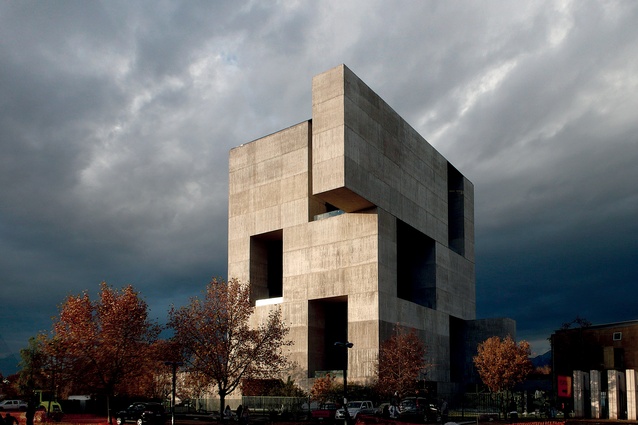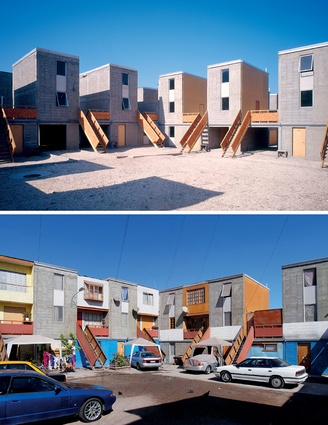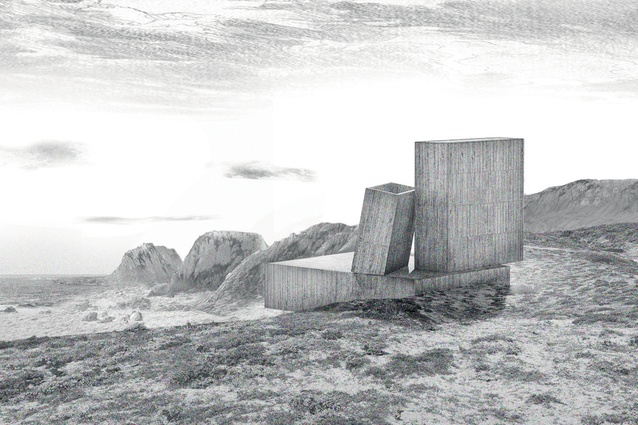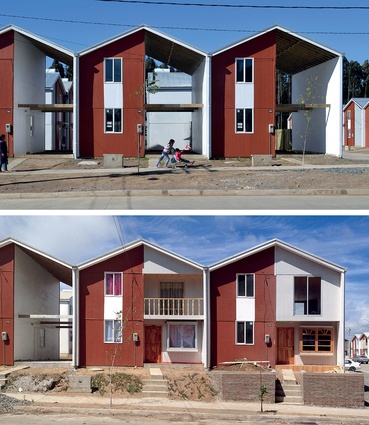The power of synthesis
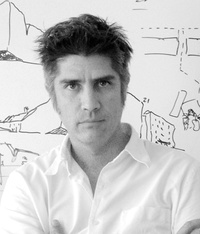
Chilean architect Alejandro Aravena has built more than 1,000 houses for Chile’s poorest communities. His firm Elemental began working on this notoriously difficult-to-design area of housing “out of ignorance”, he explains. However, as it turned out, his firm’s rigorous and innovative design approach, utilised within a social framework, has set a precedent within the profession.
Elemental’s social housing encourages personal investment on the part of the inhabitants through its ‘half a house’ concept, whereby the structure of the house is built so that half the house is habitable but the remaining half is unbuilt for the tenants to develop at a later stage. It is not difficult to imagine that this process has challenged the building industry in Chile and it would certainly be an interesting approach to apply in the New Zealand context – culturally (given the DIY obsession of Kiwi’s) and economically (cheaper to build) – were there support provided by the industry and the Government.
The subject of Aravena’s recent Futuna Lecture Series in New Zealand was ‘the power of design’, which he described as ultimately being “the power of synthesis” because, increasingly, architects are dealing with complex issues and problems. He explained that synthesis is needed in order to “provide comprehensive answers that do not reduce the initial complexity of the problem”. He sees this as one of the biggest challenges for the profession and gave the audience three project examples designed by his firm.
Firstly, synthesis can be found in the firm’s social housing where “there was no money” and, secondly, in Elemental’s Villa Verde housing scheme, built for the reconstruction of Constitución in Chile after the 2010 tsunami, where “there was no time”. The third project was the Innovation Center (in Santiago) because “there was too much money and too much time”.
In the first two examples, the power of synthesis is trying to address the threat of a lack of quality from no time or money. He explains that, “Whenever there is scarcity of means, somehow we’re expected to respond with an abundance of meaning… and whenever there’s an abundance of means, there’s the threat of having a scarcity of meaning – responding just because you can.”
But, he suggests, in all cases, there’s an even bigger threat:
“The built environment is governed by the paradox of capitalism, which is the excess of greed and the lack of ambition… The construction of the built environment has been used just as a way to make money so it’s just a means and not a goal in itself; it’s not about improving the quality of life for people.”
Aravena states, “We’re really conscious that the reason we are building is because we’re trying to improve quality of life through building and that’s the vision… so the power of sythesis is to remind us about the ultimate goal.”
Justine Harvey: What led you into architecture?
Alejandro Aravena: I’ve been asked this question a few times and I still don’t have an answer… The Portuguese poet Fernando Pessôa suggested that all the big choices in life are involuntary* – you just do them. I have no idea but, as soon as you choose something, how do you plan to enter into a body of knowledge? Maybe that was a much more conscious path in the sense that the (university) professors I had were both the right professors and the bad professors.
One of the right professors I had, Fernando Pérez, made it pretty clear that we had to, as quickly as possible, swallow thousands of years of knowledge about architecture: “What you are doing is supported by people who, before you, have achieved to outstanding levels, so you better make sure that you are able to put yourselves on their steps; which choices or preferences did they make?
Because, in the end, design is about what you prefer and there are people who prefer better options than others. All the time we are choosing paths… there are infinite forks so you had better make sure you’ve seen enough forks and preferences so that, 25 steps from now, you know where this may lead.
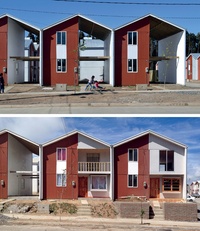
“On the one hand, there is a body of knowlege to feed you; simulaneously, you feel a responsibilty because you need to respect the standard that architecture has had…” That was from the good professors. On the other hand, the bad professors were extremely important because, the worse the professor, the more lessons you are able to discover yourself. You want to prove them wrong just for the sake of saying the contrary of what they are saying. That trains you in a certain intellectual independence and thinking freedom. It tempers you somehow… So the way I started was really about how I should walk this path.
JH: How does that relate to the point you made in your lecture about how, as an architect, you need to understand the question?
AA: In Chile, we started architecture mainly with photographs; there’s no such thing as an empire like the Incas in Peru or even the Spanish. Chile was always at war and there was no time for building, other than things out of earth. It was a very subtle, weak culture so, as soon as one was able to travel, even as close as Peru, one could feel the gravitas of the built environment.
So, when I arrived in Europe for the first time (in 1991), I remembered one of the good professors saying to me, “Be careful because it’ll be like you’ve been on a hunger strike for all of these years and you’re going to arrive there and it’s going to be a banquet. Make sure that you get all those intellectual meals one at a time”; this is why drawing and measuring became so important to me, otherwise you are overwelmed… I was really into drawing and measuring every single building.
JH: What kind of measuring?
AA: With a measuring tape. I mean, how wide is a column at the Parthenon, for example? Because, in the end, as an architect, you have to provide measures for things. There’s a form and you have to give measurements between the columns, and you have to prefer that… What’s the width of a column in a Doric temple? What’s the distance in between the columns? Each of them is 2m, actually; there is a 2m-wide mass and then a 2m-wide void. It’s a 1:1 thing so no wonder you feel that robustness and stability. But, if I had not measured, I would never have thought that it was a 1:1 proportion… then you arrive at the subtleties of the thing.
So you were beginning to understand the decision-making processes of the architects of the time. While drawing, you are building again and, while measuring, you are designing again. You are putting yourself in the footsteps of the guy that had to decide: “Okay, this column is this distance from the next one”. This is a decision that somebody took 2,000 years ago and there you were, while measuring, on the same footsteps.
When you measured the centre of the Doric temple, actually it’s between 241 and 242cm: never the same measure but more or less the same, so there’s a slight variation in the form. But, geometrically speaking, it’s so strict that it carries the risk of being dead because it’s so perfect. So it’s always tempered with slight adjustments: the way we ourselves are not perfect – the face, for example. There is something alive in the mistakes. In any case, when you arrive at the corner of the Doric temple, it’s 212cm so there is 30cm difference between the centre and the corner. It’s not an aesthetic operation; it’s a consequence of the width of the block on top because, between columns, you’re putting a piece of stone that arrives at half the cornice.
But, when you arrive at the corner, you don’t have the next column so you have to make two pieces of stone meet on the corner and that’s why you need to push the column towards the centre; otherwise, the top piece of stone will be going out of that column. These are very pragmatic constructive decisions that are synthesised with aesthetic operations and with cultural operations because, ultimately, the Doric temple is about having the story told on top and those tablets are carved with a myth. They are the ultimate explanation of reality for the Greeks. It has to remain constant and steady so the entire building underneath needs to be adjusted.
There is the capacity for one single form or object or construction to synthesise cultural construction and the way we perceive reality and aesthetics. Once you’ve seen that, it’s very hard just to do whatever.
JH: And yet many buildings are designed without that kind of consideration.
AA: But, when you draw and measure these things, then you understand. Without measuring the thing, it’s impossible to notice with the naked eye the 30cm difference between the centre and corner because you’re looking with your eyes and your prejudices and all of that. But, once you measure, it’s obviously shorter. So, much more important than how I started is discovering the consciousness about how you’re going to walk the path once you’ve started.
JH: On the theme of education, we have an issue here in New Zealand with some schools being built by the Ministry of Education without adequate consultation with the local communities and the pupils. When I asked to look at the designs for new buildings at one Auckland primary school, I was fobbed off by the headmaster and, yet, there are so many talented architect parents in that school who would be a fantastic resource in creating a wonderful new environment for the children and the community.
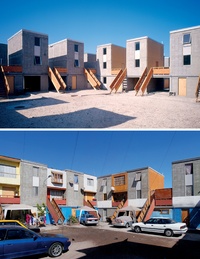
AA: I don’t know about here in New Zealand but, in Chile, if you don’t do that, what you get is the parents rioting, locking the chains of the school and saying, “Unless you ask us, we’re not going to let you move forward”. And that’s for almost every thing; there’s a population that’s been empowered. Maybe we’re too much to the other side, with protests about education, the mining industry, energy… in principle, that’s not something to be feared because, if channelled in the proper way, it will allow the status quo to end. Otherwise, why change?
We’re living in a world with completely new questions so the importance of participation, at least in Chile, is not a choice any more. But, the specific techniques for how to make a community participate: this is not about asking the people for the answer, it’s about identifying the right question.
JH: There is fear about public consultation here. I’m interested in ‘the fear’, within government, organisations and the architectural community itself, that the public may not know what is the best thing.
AA: The biggest risk is that you end up designing with a committee: that you have to consult for everything and end up with average design. But, it’s like going to the doctor; if I go to the doctor and I’m sick and it hurts here and here, the doctor should ask me when it hurts and how does it hurt, do some tests, then he would come to a diagnosis. I am saying, “My arm hurts, I need surgery” but he is saying, “No, your arm hurts but it is your heart that’s the problem.”… There’s knowledge on the part of that doctor to say ‘heart not arm’. This is something we are not negotiating on but then I may have a say in how to move forward. I can ask, “If it’s the heart, will I need surgery or are we going to solve it with alternative therapies, such as changing the diet?”
Participatory design is not about consulting by committee but, for every stakeholder involved, it’s important to be involved because then we are not missing any dimension of the problem. The power of architecture is that it can synthesise that complex entry to the problem. You organise the information into a proposal as soon as possible, then throw it on the table and the discussion becomes about where to move, not about the diagnosis.
A common problem in participatory design is to invite people to complain about where we are, so channelling those particles of a problem into one direction is the crucial factor. We work with a strategy communications company that has sociologists and anthropologists on board. One of their guys said, “You treat the process intuitively. You treat the people horizontally. You don’t oversimplify the process because you think they don’t know about the subject, nor overcomplicate the subject to justify that you are being paid a consultant’s fee.”
So I say what I know (to the stakeholders): “I don’t care less if 95 per cent of people vote for this thing if it doesn’t make sense or it’s professionally irresponsible. Sorry, this is not open to voting.” But there are other things that they might know that I didn’t know about. It’s a two-way exchange. Guilt should be kept off the table. There shouldn’t be any guilt and there shouldn’t be any arrogance. As soon as you create a horizontal, honest relationship, that’s the moment when this kind of flux may begin to happen.
* Fernando Pessôa (1888 – 1935) was described as one of the most significant literary figures of the 20th century. In The Book of Disquiet he stated: “Life is an experimental journey undertaken involuntarily. It is a journey of the spirit through the material world and, since it is the spirit that travels, it is the spirit that is experienced.”

